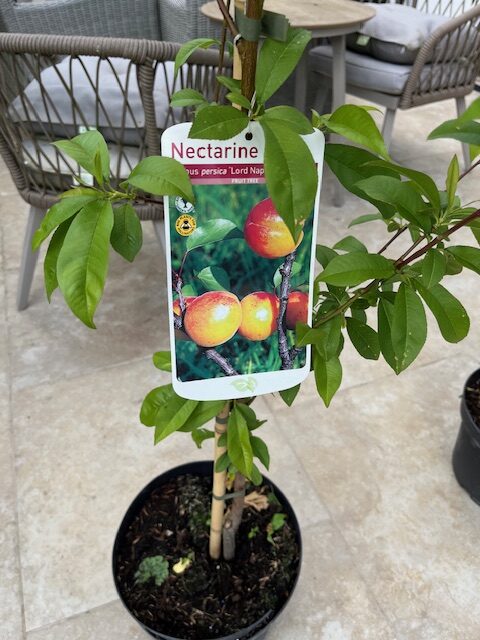Fan‑Training Nectarine and Apricot Trees: Planting, Aspect, Pruning & Feeding


Fan-training stone fruit trees is an excellent way to enjoy reliable crops in a small space and to create an attractive feature against a sunny wall or fence. Nectarines and apricots, though closely related, have slightly different requirements. This guide compares the two and explains how to plant, train, prune and feed them for years of juicy harvests.
Key Differences between Nectarine & Apricot
Nectarine
- Blossom very early (late Feb–March); needs fleece on frosty nights.
- Smooth skin, sweet‑tart flesh.
- Needs more summer heat to ripen well.
- Susceptible to peach leaf curl and red spider mite.
Apricot
- Blossom early (March–April) but slightly later than nectarine.
- Velvety skin, aromatic sweet flesh.
- Ripens in slightly cooler summers; often more vigorous growth.
- Prone to bacterial canker and brown rot.
Choosing the Right Aspect
- A south or south‑west facing wall is ideal; east‑facing sites are acceptable but morning sun on frosted blossom can cause damage.
- The wall stores daytime heat and releases it at night, helping fruit to ripen.
- Avoid frost pockets; cover blossom with fleece on cold nights below −2°C.
Planting
- Buy a one‑year‑old maiden tree on semi‑dwarfing rootstock (e.g. St Julien A).
- Plant 20–30 cm from the wall so roots are not in the rain shadow.
- Improve heavy soil with well‑rotted compost and grit; aim for pH 6.5–7.0.
- Insert horizontal wires 30 cm apart up the wall to at least 2 m high before planting.
Establishing the Fan
Winter after planting
- Cut the maiden back to 40–45 cm above soil, just above a bud.
- Select two strong opposite buds to form the primary arms; rub off others.
First summer
- Tie new shoots out at 35–40° to encourage wide crotch angles.
- Pinch out side‑shoots at 5–6 leaves to focus energy.
Second winter
- Shorten primary arms by one‑third to outward‑facing buds.
- Select two secondary arms on each primary, spacing them evenly.
Subsequent years
- Maintain the fan by summer pruning laterals to 20 cm and winter pruning to 2–3 buds of new wood that bore fruit.
Pruning Calendar
- June – Remove vigorous upright growth, thin congested areas.
- Late July – Summer prune laterals to five leaves.
- February – During a dry, frost‑free spell, remove dead, diseased or crossing wood; shorten fruited shoots to a suitable replacement.
Feeding & Watering
- Mulch annually in March with 5 cm of garden compost, keeping it away from the trunk.
- Feed with a balanced organic fertiliser (e.g. fish, blood & bone) at 70 g m² in early spring, plus a high‑potash feed (sulphate of potash) after fruit set.
- Water deeply every 7–10 days in dry spells; trees in the rain shadow of a wall dry out quickly.
Pest & Disease Tips
- Spray a copper‑based fungicide in January to reduce peach leaf curl on nectarines.
- Hang pheromone traps for plum moth from May.
- Remove and destroy any mummified fruit to prevent brown rot.
Harvest & Aftercare
- Nectarines ripen from late July; pick when fruit detaches with a gentle twist.
- Apricots follow in August; fruit should feel slightly soft and smell fragrant.
- After harvest, remove any dead or broken wood and renew ties.
Final Thoughts
With a warm wall, careful pruning and regular feeding, both nectarines and apricots reward the gardener with luscious fruit and a beautiful fan‑shaped feature. Choose the variety that suits your taste—or grow one of each for a longer picking season.




